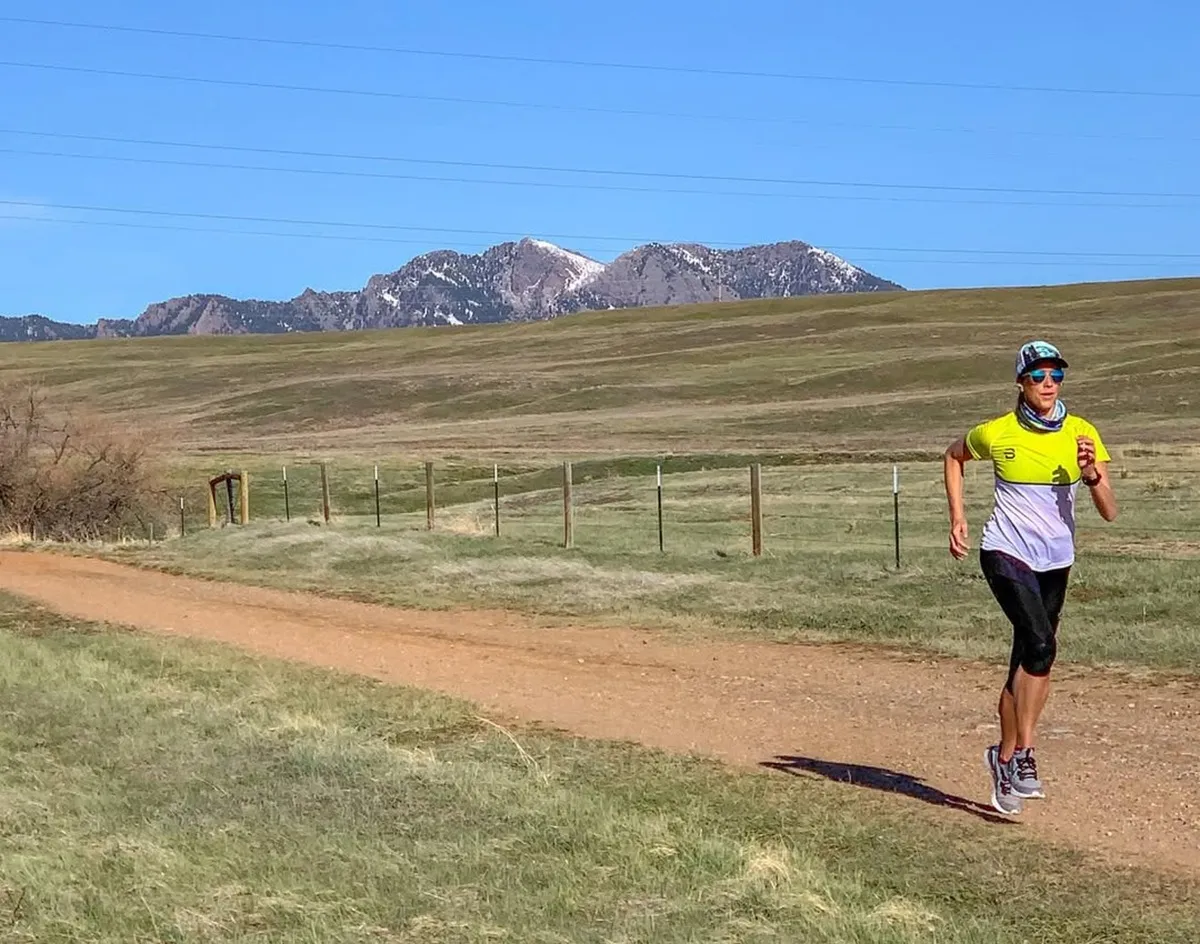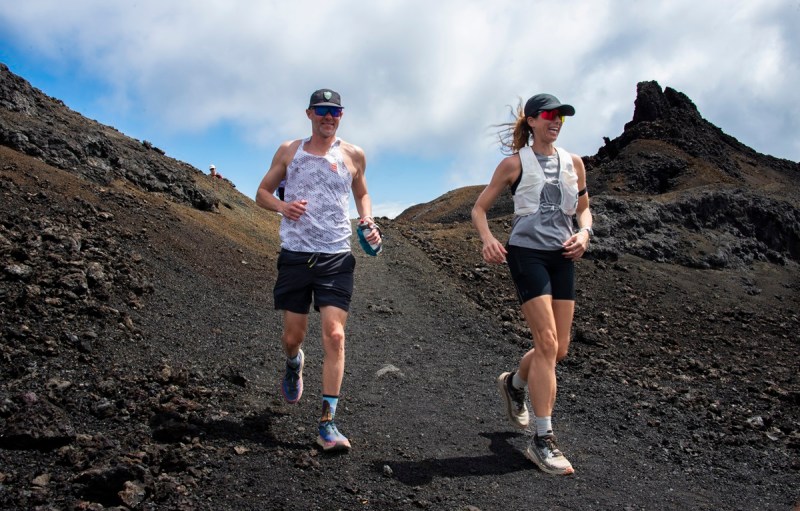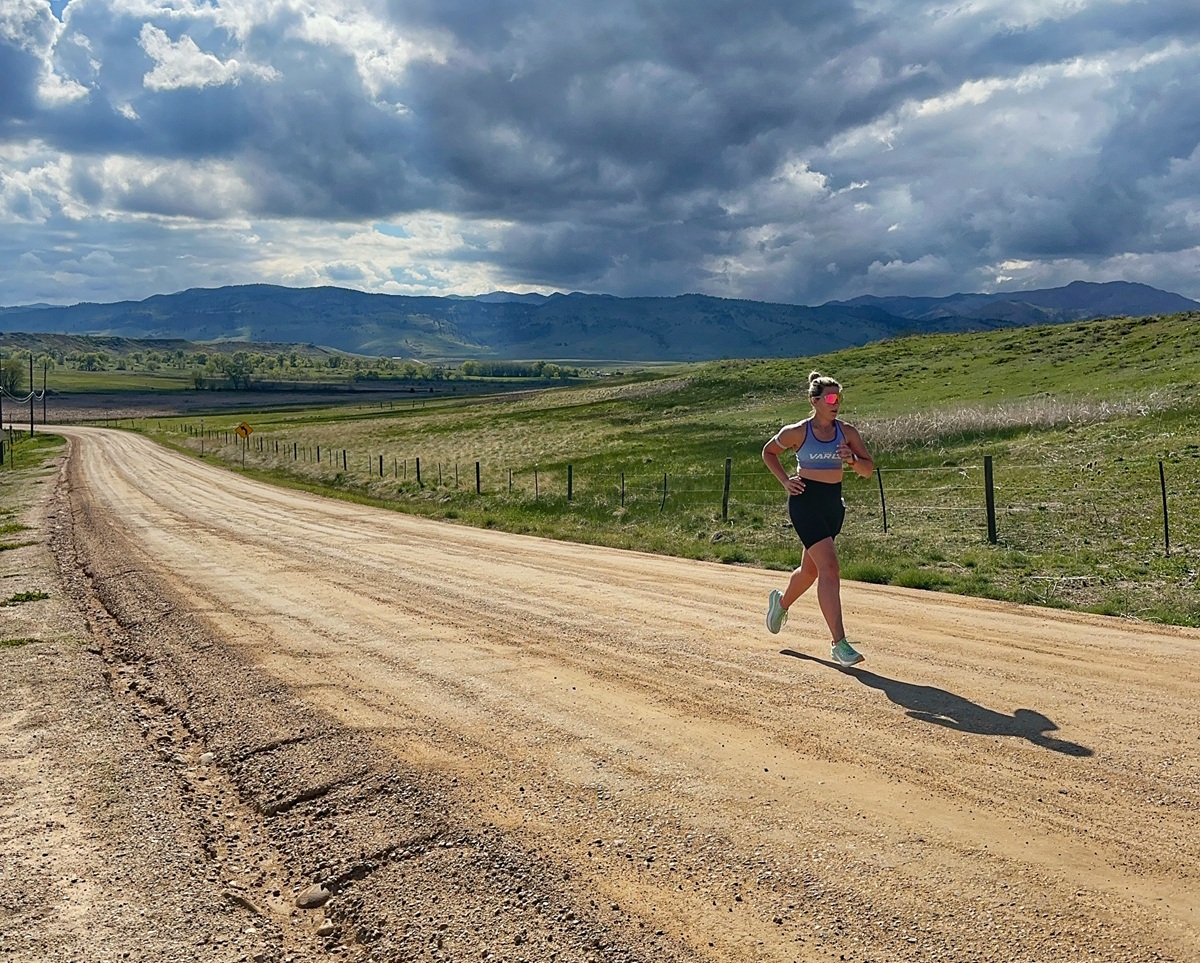While hill workouts and hills sprints sound interchangeable, they’re actually different things. Both are massively beneficial. Today we want to give you concrete ideas to get out and start building those powerful legs.

Want to get faster? Become more injury proof? Improve your stride?
I think you know what I’m going to say next: stop avoiding hills!
And no, you don’t need to live somewhere hilly with trails like Colorado (basically, I can’t avoid hills). The consistent variation, even if small, will add up, but don’t be afraid to seek out some of the bigger hills too.
If you’re not sure where to start, don’t worry. I’ve put together a few examples of workouts that are perfect for all levels.
Different Types of Hill Workouts
The type of hill workouts you do will vary based upon the goal in your training. Here are the three most common types of hill workouts:
Speed focused: Include hill sprints on steep inclines
Hilly race training: Include longer duration uphill intervals on less steep inclines.
Overall fitness: Including a variety of hilly runs, hill sprints and hill intervals throughout your training program
A few notes when it comes to finding hills for a good workout.
- Find a steep hill near you for repeats. Nothing close? We used bridges in Miami and sometimes the ramps inside an empty parking garage when running in a group.
- Find rolling routes for longer runs. It might be worth a little drive to help you get the variety.
- Embrace the treadmill for long steady inclines if you don’t hills near you.
Let’s explore some examples of workouts that you can start adding to your training routine.
#1 Hill Repeats for Beginners (Pro Tip: Start Small)
If you haven’t been doing hills, start with short hills with a very small incline. Get used to the feel of both up and down before tackling bigger hills. These are effectively hill sprints and they will forever be hard because how hard you can go will change!
Keep it simple and end any of your weekday or long runs with 5-10 hill repeats. At first just get used to running up and walking down, after a few weeks start increasing the uphill pace and over time increase the duration.
- add in 5 repeats of 20 seconds hard uphill
- walking down to a full recovery
- go again
- Within a few weeks, try adding these repeats to the end of a few runs
When adding hills, focus on your form and then layer in the effort. Take smaller steps and pump your arms in an upper cut motion. Keep your eyes looking in front of you and not at the ground to help run tall and with shoulders back.
Doing this will build quality leg strength and has been shown to help with injury prevention per Matt Fitzgerald. It’s a key for the runners I coach and I think has kept many of them injury free.
After you get some practice, here are examples of increasing reps, time or effort:
- 5 reps x 20 seconds – 10K
- 8 reps x 30 seconds – 10K
- 12 reps x 15 seconds – 5K pace
- 5 reps x 1 minute – half marathon pace
If you’re adding hills at the end of a treadmill run, change the incline between 5-7% throughout the reps.
No matter what distance your race is, adding hills early into your training will make a big difference. Just like with mileage, gradually increase the time and difficulty to avoid an injury.
Benefits: Hill sprints are one of the most studied and proven ways to increase your overall speed and endurance.
#2 Rolling Hills Tempo
If you can find a path with rolling hills, start adding it in to your weekly rotation of runs. If you can do it up to 3 times a week, you’ll quickly reap the speed and strength benefits, but don’t do it at the exclusion of taking enough runs easy and fully recovering between workouts.
Rolling hills throughout your workout are especially beneficial when you start thinking about conquering heartbreak hill!
- Warm up with 10-15 minutes easy running
- Increase effort to medium (half marathon pace, not 5K) for 2-3 miles of rolling hills
- Cool down with 10-15 minutes easy running
Benefits: This is going to feel challenging but it will help teach you how to take advantage of the downhills for recovery while still maintaining the same effort.
#3 Rolling Hills Fartlek
Another option is to run it more as a fartlek style workout. Fartlek here means we aren’t doing exact intervals of 1 min on, 1 minute off, but instead allowing your route to dictate when you are pushing hard.
- Warm up with 10-15 minutes easy running
- 10 x 1 minute hard efforts, focus on starting them at the bottom of a hill
- Cool down with 10-15 minutes easy running
Benefits: Not only will you be utilizing different muscles throughout the run, but it forces you to learn effort. Your pace might change on an uphill, but the goal is to keep your effort the same when doing an easy run.
#4 Hill Ladder
Ladder workouts can be completed in all different ways- climbing up, down or both up and down with typically 60-120 second rest between each interval. When adding hills to the ladder, you want to make sure that your not charging uphill with all of your effort. Pace yourself, especially as the intervals get longer so that you’re not too fatigued by the final few intervals.
- Warm up with 10-15 minutes easy running
- Run uphill for 5 seconds, jog/walk down
- Run uphill for 10 seconds, jog/walk down
- Run uphill for 15 seconds, jog/walk down
- Repeat until you hit 30 seconds
- Cool down with 10-15 minutes easy running
Benefits: The strength that you’re building in your quads when running uphill will translate to improved running form. You’ll find it easier to pick up your knees, driving them in front of you rather than back when you hit flat surfaces.
#5 Treadmill Hill Play
Learning to focus on effort over pace can make conquering hills easier.
As you allow your body to slow conserving energy on the way up, pick up speed on the way down and even out in the flat areas.
I love doing this treadmill workout because your hard efforts are rewarded. In this workout, your goal is to try allow your pace to change as needed to maintain the same effort level. You’ll find by the 0% that your legs are ready to fly.
- Warm up with 10 minutes easy running
- 1 min @ 3% incline
- 1 min @ 5% incline
- 1 min @ 0% incline
- 1 min @ 1% incline
- repeat 3-10 times
Benefits: While the ideal race day scenario is an even pace from start to finish, that doesn’t apply to hilly races like NYC or Boston. Instead, you need to focus on finding a consistent effort level. That allows you to run faster on the flats and downhills, while having enough energy to hit the hills.
#6 Longer Intervals
If you’re training for longer distances like a half or full marathon, during a mid distance run, start to add longer hill intervals; the increase and decrease of heart rate will mimic the intensity of hills late in the race.
This is another great workout to add to a longer treadmill run, especially if you’re able to switch between an incline and decline. Here’s an example:
- Warm up with 20 minutes of easy running
- 6x 2 minute intervals at goal race pace, not too steep of a hill, jog back downhill
- Finish with 20 minutes of easy running
Benefits: Running uphill intervals will help you to improve your running economy, meaning that you’ll be able to run for longer distances and faster before becoming fatigued.
#7 Downhills
Everyone gets super focused on the uphill and often forgets that on the other side, you’re usually going to have to run downhill putting a lot of stress on the quads (here are some downhill running tips). Races that are specifically downhill are also becoming more and more popular.

- 20 mins of easy running
- 8x downhill strides, jog easy uphill
- 20 mins of easy running
Try to avoid flying down hill and practice slowly and gently accelerating as you go. Make sure to stay in control and gradually increase your pace just before you hit the flat.
Turn around and jog back uphill at an easy pace, but do not forget to take those smaller steps and under cut arm movements.
Benefits: Even though you’re moving faster as you run downhill, your heart rate usually stays lower, so you’re getting a pretty good workout without pushing too hard. This is a great way to teach your body how to run faster with less effort!
Benefits of Running Hills
It doesn’t matter whether you’re training for a 5K or marathon, hills are an important part of the process. And they work for everyone from beginners to experienced runners.
There are so many benefits of running hills as a regular part of training, but we’re going to keep it short and sweet with a few here.
Improve Cardiovascular Fitness for Endurance
There’s a reason you often want to avoid hills on your route, it’s harder than running on flat ground! Which is exactly why we include them in our training, so that we can continually challenge our system.
It’s the same reason you don’t want to lift the same weights over an over. If your goal is to improve your endurance then we want to work your system in different ways.
An unexpected benefit is that you’ll be switching up which muscles are being primarily used and this can indeed make it easier to run farther!
While living in Miami, I began to realize that running super long on flat ground meant the same muscles had to fire in the same pattern for the duration of the run which lead to much faster fatigue than having some variation.
You begin to fatigue less as you improve muscle elasticity.
Improve Running Form
One of my favorite benefits of hills is that it’s impossible to overstride running uphill. Due to the slope you’re slightly leaning forward (a huge goal is learning to lean from the ankles and here it’s happening naturally)
Additionally, it’s impossible for your stride length to be too big. Instead, you’ll be taking shorter and faster steps, which means improving your cadence.
This means you are practicing driving your knee up and the lean without even knowing it. Shorter strides both up and down ensure you land mid-foot.
Additionally, the strength you’re building in your quadriceps will make it easier on every surface to pick up your knees. Driving them in front of you rather than back for good form.

Help to Increase Your Turnover
Running cadence can also be thought of in terms of turnover, which is the rate at which each of your foot lands when you run. When running uphill, you need to shorten your stride and increase the speed of your steps.
Your running cadence is one of the two determining factors that influence how fast you can run, and running uphill can help you improve it. The other factor is your stride length.
Unlike stride length, which has been shown to increase injury risk, studies prove that running cadence increases speed and minimizes injury risk.
Now that you have some examples of hill running workouts, it’s time to start embracing the hills!




 Norda 005 Review | Lightweight, Built to Last Race Day Shoe
Norda 005 Review | Lightweight, Built to Last Race Day Shoe
